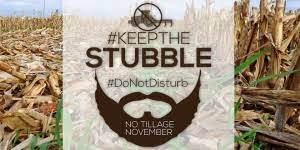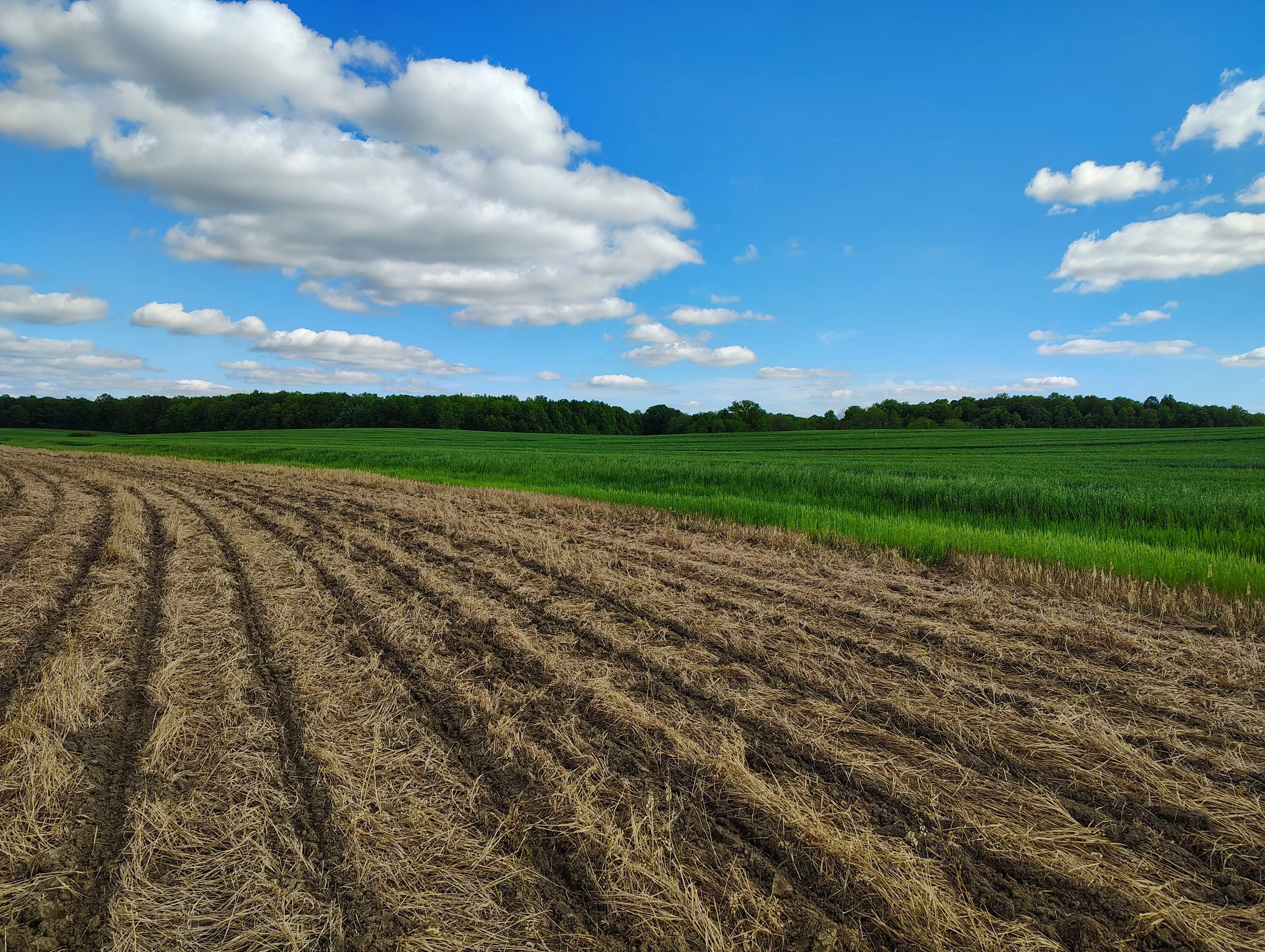Keep the Stubble—On Your Fields, That Is!
You may notice a little more facial fuzz around Ashland County this November. No, it’s not just hunting season—it’s No-Shave November, that time of year when folks stash their razors in the name of cancer awareness and let their beards roam free. But let’s be honest: the best place to leave the stubble this November isn’t your chin.It’s your fields.
That’s right—welcome to No-Till November, where the only thing we’re breaking up is with our tillage equipment. At the Ashland Soil and Water Conservation District, we’re encouraging farmers to give the soil a rest and embrace a more rugged, unshaven approach to field management. Think of it as the conservation world’s version of growing a beard: low-maintenance, natural, and good for your long-term health.
Now, I know what you’re thinking: “But I’ve always tilled in the fall!” And hey, we get it. Tillage is a time-honored tradition on many farms. But here’s the thing: not everything old is gold—just ask anyone who traded in their flip phone for a smartphone. And when it comes to soil, less disruption usually means better long-term productivity.
Leaving crop residue—aka “the stubble”—on your fields is like tucking your soil in for the winter under a nice warm blanket. That stubble protects against erosion, keeps nutrients where they belong, and helps feed the good microbes underground. It’s a win-win-win.
In fact, there’s a whole list of benefits to no-till farming. Think reduced soil erosion, improved soil health and structure, and higher moisture retention (hello, drought resiliency!). And when it comes to added bonuses, no-till means more time in your day and less fuel used, less wear and tear on your equipment, ower carbon emissions, and even more habitat for wildlife
That’s a lot of upside for simply… not doing something. According to the 2017 Census of Agriculture, 37% of U.S. farmland with a reported tillage system was managed using no-till practices, up from 35% in 2012. Reduced tillage methods also rose, while intensive tillage declined. Those are the kinds of trends we like to see—less disturbance, more conservation.
And hey, your bottom line likes it too. USDA estimates farmers can save about 3.6 gallons of fuel per acre by switching from conventional tillage to no-till. Multiply that across a few hundred acres, and you’re not just saving soil—you’re saving serious cash.
Now, maybe you’re no-till curious but not sure where to start. That’s where we come in. Ashland SWCD operates a no-till equipment rental program to help area farmers take the plunge without having to invest in new machinery right out of the gate. We’ve got a 10-ft and a 12-ft no-till drill plus a 5-ft ground driven seeder,a cover crop interseeder, a roller/crimper (for those planting green dreams), and even a mannure spreader in our equipment rental line up.
Soil Conservation Specialist Brennen manages the equipment program and can talk shop with you to make sure you’ve got the right tools for the job.
Another key piece of the puzzle? Cover crops. These workhorses help reduce compaction, build organic matter, and keep soil and nutrients in place through winter. If compaction is an issue, try deep-rooted varieties like tillage radish or turnips to naturally bust up that hardpan.
Need help with the cost? We’ve got you covered—literally. Ashland SWCD partners with the Muskingum Watershed Conservancy District to offer a cover crop cost-share program, making it easier for you to dip your boots into the cover crop world.
Transitioning to no-till isn’t an overnight change. It’s more of a marathon than a sprint—but with a little planning and patience, the benefits are undeniable. Be sure toevenly distribute crop residue at harvest, evaluate your spring planting strategy (green covers, terminated covers, fall residue?), and track not just yields, but fuel, fertilizer, and time savings.
And be sure to get your soil tested every 3–4 years, too! Ashland SWCD Water Quality Specialist Zoey Dudte can help you with soil testing and even put together a free nutrient management plan tailored to your farm.
So this November, let’s keep the razors tucked away—and keep the tillage tools in the shed. Join Ashland SWCD in celebrating No-Till November, and give your soil the breather it deserves. After all, a well-rested field is a productive field.
Still have questions? Stop by our office at 110 Cottage Street, give us a call, or check out our website. Whether you’re all-in on no-till or just kicking the tires, we’re here to help you make conservation work for your farm.
And remember: good soil is like a good beard. The less you mess with it, the better it grows.




